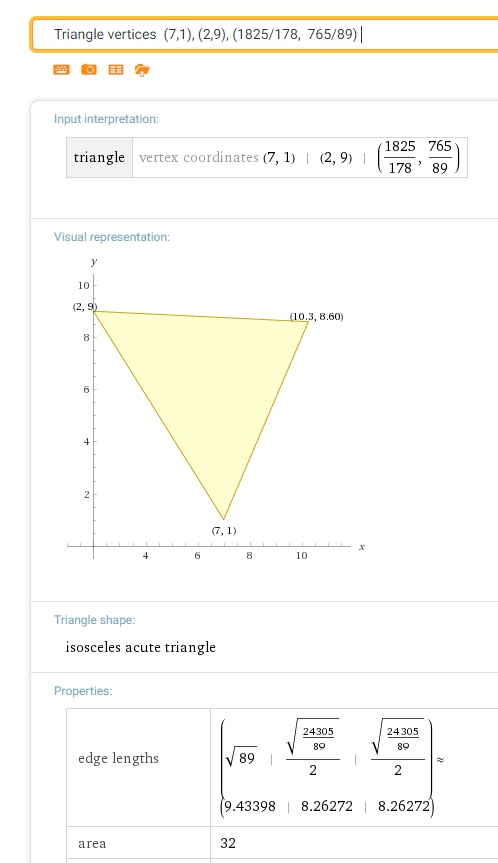An isosceles triangle has sides A, B, and C with sides B and C being equal in length. If side A goes from (7 ,1 ) to (2 ,9 ) and the triangle's area is 32 , what are the possible coordinates of the triangle's third corner?
1 Answer
Explanation:
We relabel in standard notation:
The base of our isosceles triangle is
The midpoint of
The direction vector from
The direction vector of its perpendiculars is
We need to go
That's a bit messy. Is it right? Let's ask Alpha.

Great! Alpha verifies its isosceles and the area is

